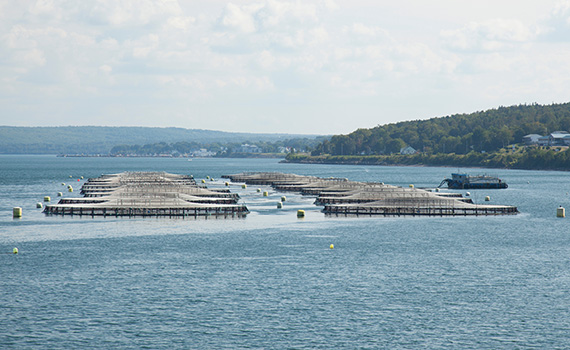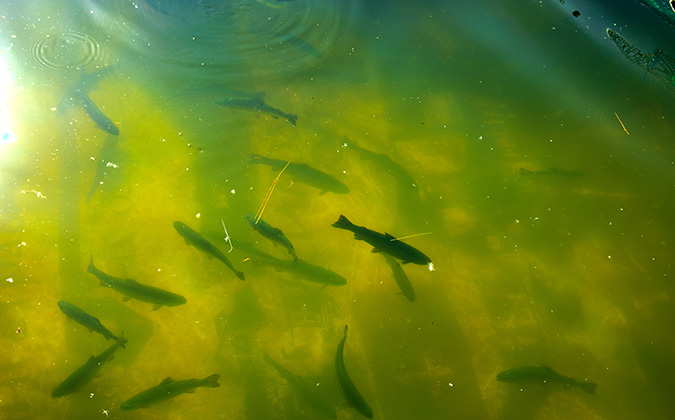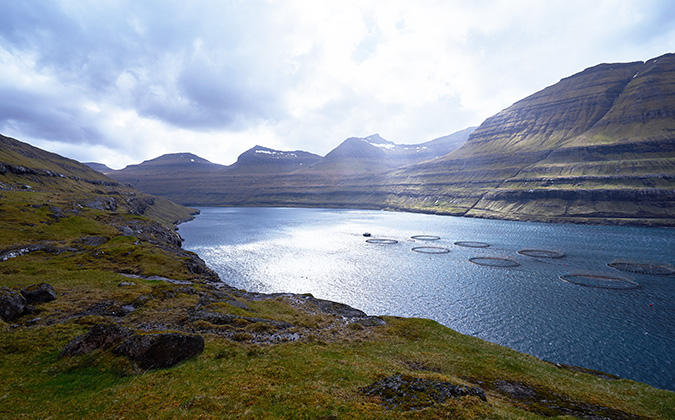
Managing high-tech vaccination on Canada’s salmon farms
Demand for vaccination is ever-growing in the Canadian salmon industry, and the country’s producers have made a big shift toward mechanized approaches in getting the job done.
Fuerste Vaccination, based on Vancouver Island, has been on the front line of this increased focus on preventative measures in fish disease management since its establishment in 2011, working with a number of the biggest farms.
On the west coast of Canada, furunculosis and infectious hematopoietic necrosis (IHN) are the two major diseases tackled by vaccination, said Heidi Fuerste, the company’s founder and principal, although recent years have also seen the start of vaccination against bacterial kidney disease. Vaccines are also used against cold-water vibriosis, vibriosis and winter sore.
Curtailing problem pathogens
Forty million vaccine doses were administered by the company over an 8-month period in 2018 and 2019 alone. A continued increase in uptake is largely due to the success of the vaccines themselves, explained Blair Billard, business operations manager, describing furunculosis as “almost non-existent” on sites now.
“Once successful trials of these vaccines had taken place and they were shown to work, the companies were quick to adopt them and use them, and it’s been very beneficial for their business,” he said.
IHN, a viral disease which can cause heavy losses, has gone from being a “major, major problem” a few years ago to highly manageable, with the development of efficacious vaccines.
“As [IHN] was so infectious among the seaside farms, it was a very challenging virus for the companies to manage. I think with the vaccination of fish, as years have gone by, it really changed. It took that problem away and changed the way that the companies could operate,” he added.
Navigating geography, biosecurity and training
On top of the recent worldwide challenge of the Covid-19 pandemic, Canada offers some innate tests to covering a large number of salmon farms effectively. The remoteness of hatcheries is a practical challenge faced by the company, with sometimes huge distances between sites. Communication is “phenomenally important” to their work, Fuerste said, and open information sharing within the team and clearly explaining practices to hatchery staff are key.
As the company works with numerous producers, biosecurity is also imperative for their vaccination crews, she said. Among the protocols in place is a rule against moving between different companies’ sites within 24 hours, unless special permission is given. Items used on sites, down to personal lunch bags, need to be properly cleaned and disinfected before being taken elsewhere.
Effective training is a bedrock of successful vaccination programs worldwide. The company’s new crew members go through intensive training at the head office, with special training for crew leaders that includes tracking doses and machinery calibration.
These leaders are responsible for tracking and reporting data to hatchery staff, managing the vaccine itself and making any necessary adjustments to machinery as vaccination is carried out, Billard explained. They also carry out some lethal sampling over the vaccination process to ensure the vaccine is being administered correctly.
Cross-Atlantic partnership
Fuerste Vaccination has been working with PHARMAQ since 2014, when the latter began vaccine trials with local hatcheries. It’s a “very open” relationship, Billard explained, with an active exchange of ideas. The widespread adoption of new technologies is making this even more necessary, as producers look to mechanization of processes to achieve higher throughput and improved accuracy with fewer staff.
“As now we have moved away in large part from hand vaccination to using machine vaccination, there are other important logistical issues that we need to address to make these machines run efficiently and effectively. And that relationship that we have will be a very big piece of that,” he said.
The success of the partnership has meant that early concerns around using machine vaccination have been successfully addressed. One in particular was around a perceived increased risk of fungus infection post intramuscular vaccination, caused by the touching parts of the machine. Although fungus is always a concern in fresh-water hatcheries, this was a worry that was quickly put to rest as producers grew familiar with the technology.
Working with a vaccine and machinery manufacturer across the Atlantic is not without its own challenges, however.
“The time difference from Norway to Canada, for example, can be a challenge. We had to set up what is technically a 24-hour texting and video hotline, where we have access to technical support across the sea,” he continued.
“These things just didn’t happen overnight; we had to communicate what our needs are and how PHARMAQ and Fishteq can help us to learn and get up to speed.”
Digital connectivity helps to streamline matters, he noted, pointing to the ability of technical experts in Norway to log in to machines remotely using TeamViewer so they can help guide adjustments if any problems arise. In Canada, the team can also log in to see the fish going through the machine in real-time to get a snapshot of progress.
New markets targeted
The east and west coasts of Canada have different needs when it comes to vaccine machinery. On the west, IHN vaccination requires use of the PHARMAQ Fishteq NFT 30 machine, which can administer a simultaneous intramuscular and intraperitoneal (IP) vaccine. Meanwhile, east coast farms may only need NFT 20 or 25, due to only administering IP vaccines. Co-injection with two IP vaccines is now possible in the NFT 25 or NFT 30 machines, which is relevant for both coasts as fish-health needs become more diverse and newer products become available.
With the company now well established on the west coast of Canada, next steps for the team include increasing partnerships in the east, as well as the continued introduction of vaccine machinery to trout production in the US. So far, they have sold one machine to a trout farmer in Washington state, with another sale to a client in California due soon.
Making significant breakthroughs in the US trout market may require some modifications to adjust to a smaller fish body size, Billard noted, as farmers would like to vaccinate trout at about 5 to 10 grams.
Fuerste Vaccination is now increasingly involved in international technical meetings to discuss the vaccination machines — something that he rates as an important point of progress.
“We have opportunities to discuss what’s working really well, what are some of the challenges and come together with all the regions of the world and figure out what will be next steps in order to continue to see these machines getting better and better,” he added.






